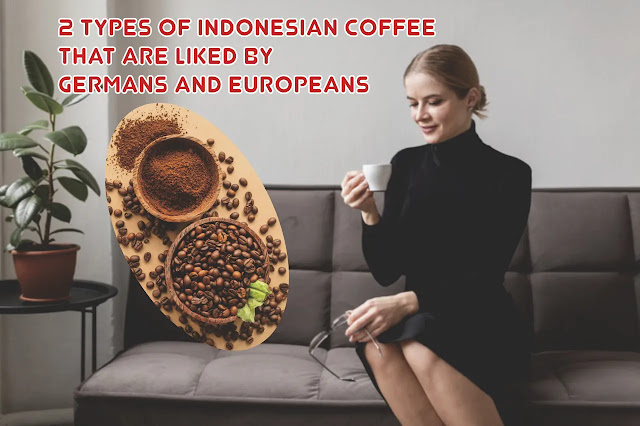2 Types of Indonesian Coffee that are liked by Germans and Europeans
Indonesia recently became one of the participants in the world's largest tourism exhibition, Internationale Tourismus Borse (ITB), in Germany. Of the many things that were promoted, two types of coffee native to the country attracted great attention from visitors.
Indonesian coffee became one of the best-selling commodities hunted by Europeans who visited this exhibition in Berlin. Until now, Indonesia still doesn't have a national drink to promote, therefore it has agreed to promote native Indonesian coffee in various promotional events abroad. What types of coffee are the prima donna of Europeans during the Internationale Tourismus Borse exhibition?
1. Indonesian coffee (Kintamani Bali Coffee) Popular in Germany
Bali Kintamani coffee stand is very popular in Internationale Tourismus Borse Germany. Lots of Europeans flocked to come to taste this typical coffee from the island of Bali.
Kintamani coffee has long been a popular souvenir for tourists who have just visited Bali. It feels so unique and even more interesting because it is part of a tradition that has been maintained for so long by the people of Kintamani.
The aroma and taste produced are said to be so different from other coffees in general. The quality of the coffee beans from Kintamani is also very well maintained, because they are grown in the highlands with cold and dry temperatures.
Grown on plantations on the slopes of Mount Batur, Kintamani coffee beans are the main ingredient for producing quality beverage concoctions. The aroma of Kintamani coffee has citrus nuances and low acidity, making it suitable for international coffee connoisseurs.
The coffee grown in the Kintamani area is of the Arabica type and is the first coffee to receive an IPR certificate
Geographical Indication. Several other advantages that are often recognized by foreign consumers include distinctive taste, resistance to pests and diseases, dense fruit, to high productivity.
Coffee cultivation in Kintamani is also regulated according to custom. One of them is in the form of an agreement among farmers, that none of them is allowed to use chemicals or grow crops organically.
Another rule that is also strictly enforced is the ban on harvesting coffee before the beans are completely red. This is important to maintain the quality of coffee. If someone violates it, you can be sure they will be subject to severe sanctions according to custom.
2. Indonesian coffee (Toraja coffee) Becomes the Prima Donna in Berlin
Apart from Bali Kintamani Coffee, Toraja Coffee is also in great demand by visitors to the ITB exhibition in Germany. This is because the taste is also quite distinctive and stands out compared to other coffees.
Toraja coffee has a taste similar to tobacco or caramel. The color is black, but not too dark. In addition, the texture is smooth and as soon as it is brewed with hot water, you immediately smell a very distinctive aroma.
Toraja is located in the South Sulawesi region, surrounded by many mountainous areas, making it perfect for cultivating coffee of the highest quality. In fact, it is said that the high quality of Toraja coffee has become known to Europeans since the Dutch colonial period.
Just like Bali Kintamani Coffee, Toraja Coffee also has a low level of acidity so that it is quite in demand by overseas consumers. Often dubbed the "Queen of Coffee", Toraja Coffee presents a distinctive aroma similar to earth. There is a prominent bitter taste, guaranteed not to make nausea.
Not a few people call Toraja Coffee similar to strong tea in terms of appearance. This is because the color looks clearer after being brewed into a glass. Even sometimes herbal characters also emerge from this coffee which has been exported to Japan, the United States and Germany.
As previously mentioned, the high quality of Toraja coffee has been felt by European nations since the Dutch colonial period. It even caused war between traders in Indonesia. According to several sources, a number of large Arab traders in North Palopo and Bugis traders in Sidenreng-Rappang Bone in the south continue to compete fiercely in the sale of a number of commodities, including coffee.
This rivalry heated up until finally in 1889 there was an open conflict. Experts call it the Coffee War and this incident also opened the world's eyes about the greatness and quality of Toraja Coffee.
Those were some of the features of Indonesian coffee (Bali Kintamani Coffee and Toraja Coffee), which had amazed Europeans at a tourism exhibition in Berlin. How, are you interested in trying Indonesian coffee?









Post a Comment
Post a Comment